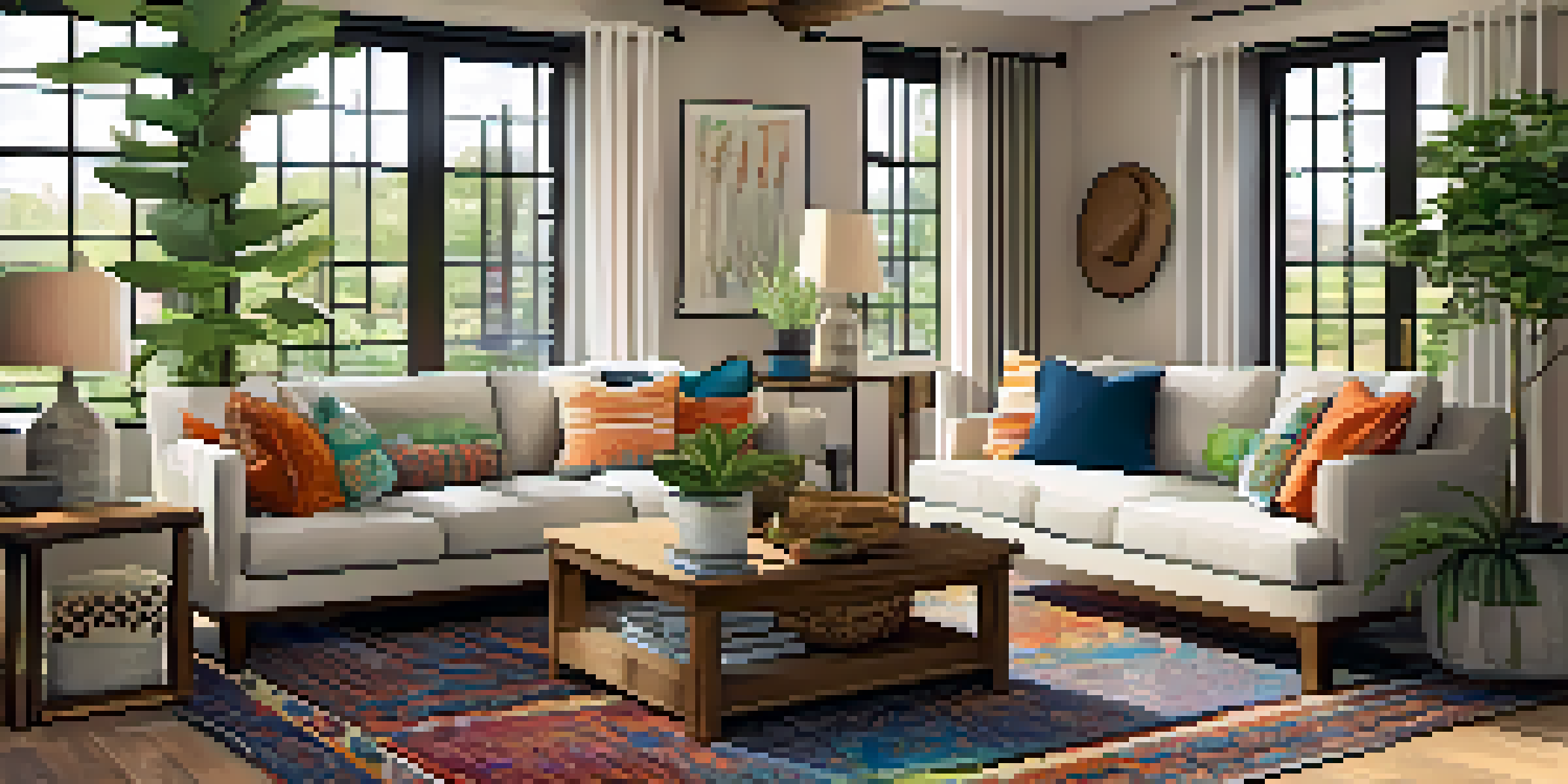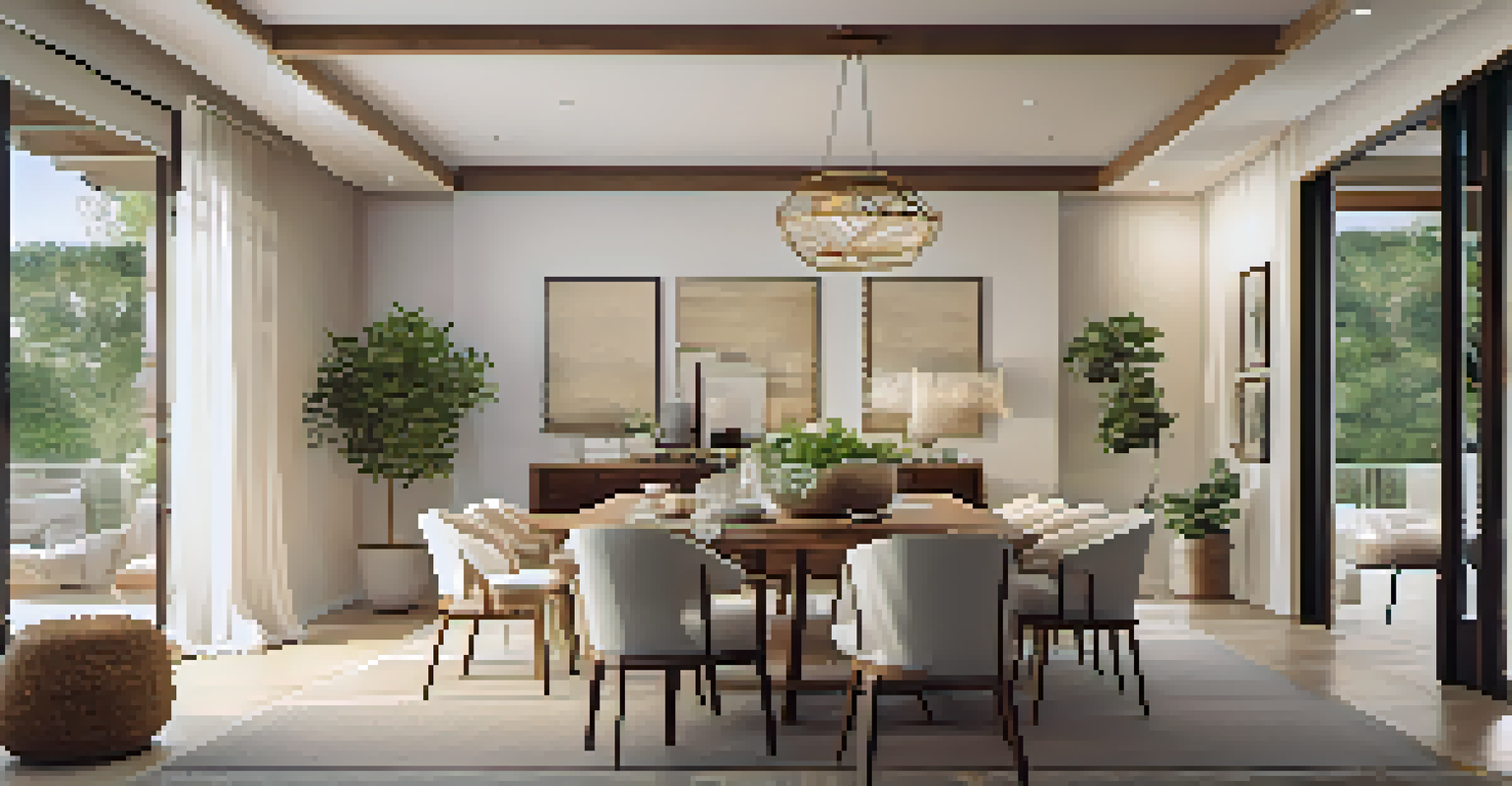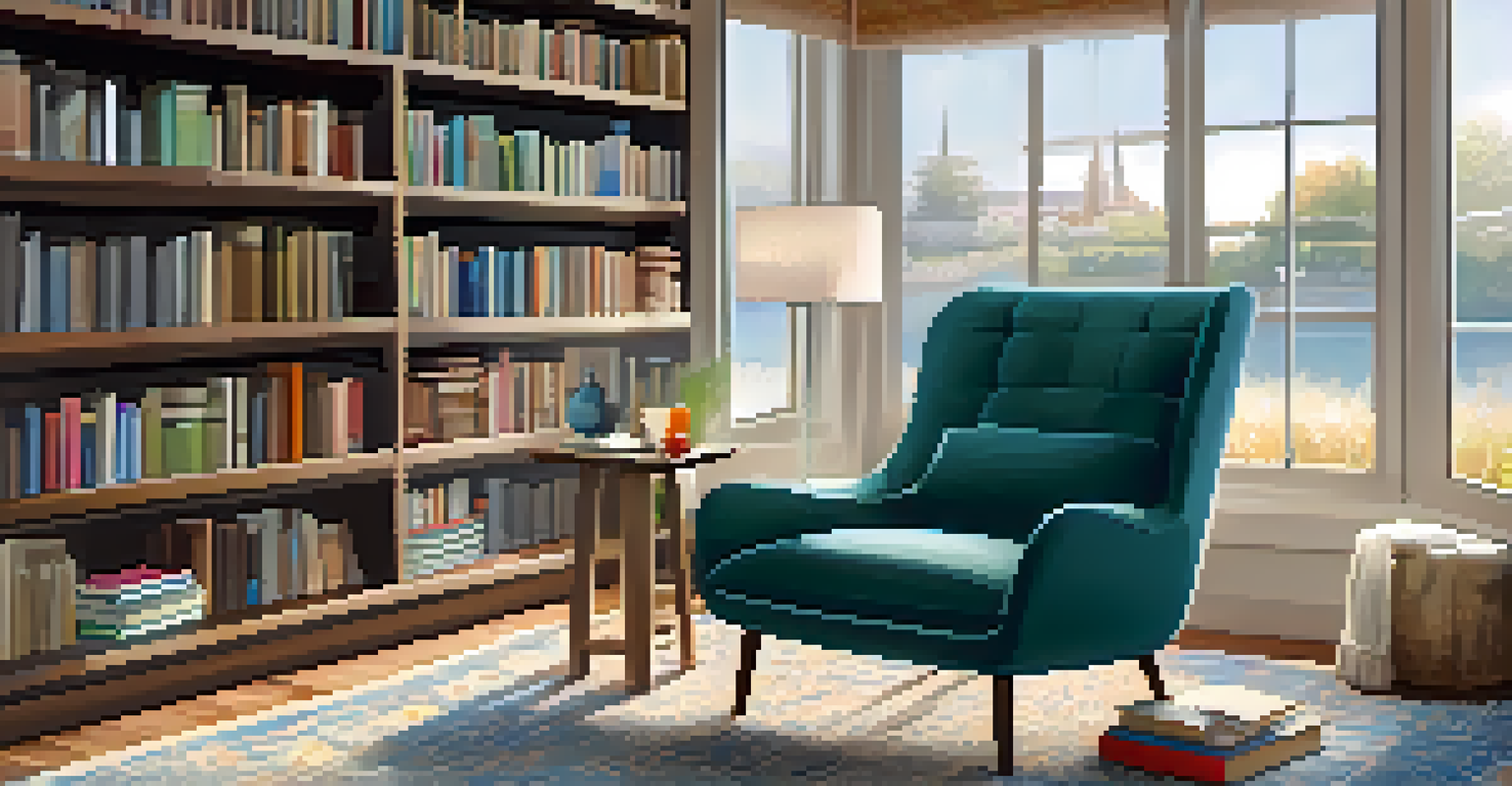The Role of Textiles in Open Floor Plan Design

Understanding Open Floor Plans and Their Appeal
Open floor plans have gained popularity in modern architecture, offering a seamless flow between living spaces. This design fosters a sense of community and connection, making homes feel more expansive. However, without the right elements, these vast spaces can feel cold and uninviting.
The details are not the details. They make the design.
Textiles play a pivotal role in warming up open floor plans by adding texture and color. From area rugs to drapes, these elements help define areas within a larger space while maintaining visual cohesion. Consequently, they can significantly enhance both comfort and style.
Incorporating textiles strategically can create an inviting atmosphere, making open floor plans feel more personal. Ultimately, the right textiles can transform a functional space into a cozy home, encouraging relaxation and interaction.
Creating Zones with Textiles in Open Spaces
One of the challenges of an open floor plan is delineating different functional areas without physical barriers. Textiles can offer a stylish solution by visually separating spaces through color and pattern. For instance, a vibrant area rug can define a dining area while a soft throw can designate a cozy reading nook.

Using curtains or fabric screens can also provide flexible boundaries, allowing for privacy when needed. These textile elements not only serve a practical function but also contribute to the overall aesthetic of the space. This approach promotes a harmonious balance between openness and intimacy.
Textiles Warm Up Open Spaces
Incorporating textiles adds texture and color, transforming vast open floor plans into inviting and cozy environments.
By thoughtfully layering textiles, homeowners can create distinct zones that cater to various activities. This strategy not only enhances the functionality of open floor plans but also enriches the visual appeal, making each area feel thoughtfully designed.
Enhancing Acoustics with Textiles in Large Spaces
Open floor plans often suffer from echo and noise issues due to their expansive nature. Textiles can help mitigate this problem by absorbing sound and reducing reverberation. For example, thick curtains or upholstered furniture can make a significant difference in how sound travels within the space.
Simplicity is the ultimate sophistication.
Incorporating soft furnishings like cushions and fabric wall hangings can further enhance acoustic comfort. These textiles not only serve a functional purpose but also add layers of visual interest and warmth to the room. Thus, they play a dual role in improving both sound quality and aesthetics.
A well-designed open floor plan should prioritize acoustic comfort, especially in shared living spaces. By utilizing textiles effectively, homeowners can create a serene environment that encourages conversation and relaxation.
The Role of Color and Pattern in Open Floor Plan Textiles
Color and pattern are essential elements in textile selection for open floor plans. They can evoke emotions, set a mood, and create a cohesive look throughout the space. For instance, a consistent color palette can tie different areas together, promoting a sense of unity.
Bold patterns can also serve as focal points, drawing attention to specific areas or features within the home. However, it's important to balance these elements to avoid overwhelming the space. Subtle patterns can add depth while still maintaining an inviting atmosphere.
Define Areas with Textiles
Strategically using textiles like rugs and curtains can create functional zones within open spaces, enhancing both style and usability.
Ultimately, the right combination of color and pattern in textiles can enhance the overall design of an open floor plan. This not only reflects personal style but also creates a welcoming environment that feels curated and intentional.
Practical Considerations for Textile Selection
When choosing textiles for open floor plans, practicality should be a key consideration. Fabrics should be durable and easy to maintain, especially in high-traffic areas. For instance, opting for stain-resistant materials can save time and effort in maintaining a pristine look.
Additionally, considering the climate and lighting of the space is essential. Lighter fabrics may be suitable for bright, sunlit areas, while darker textiles can create a cozy atmosphere in more shaded spots. This thoughtful approach ensures that textiles not only look good but also withstand the test of time.
Ultimately, selecting practical textiles can enhance the longevity and functionality of an open floor plan. By marrying style with durability, homeowners can ensure their spaces remain beautiful and livable.
Sustainable Textiles for Eco-Friendly Open Designs
As sustainability becomes a priority in home design, choosing eco-friendly textiles is gaining traction. Natural fibers like organic cotton, linen, and hemp not only reduce environmental impact but also contribute to healthier indoor air quality. This aligns perfectly with the open floor plan's emphasis on spacious, breathable living.
Incorporating sustainable textiles can also enhance the overall aesthetic, adding a unique texture and look to the space. Additionally, many eco-friendly fabrics come in beautiful colors and patterns, proving that sustainability doesn't compromise style. This choice resonates with environmentally conscious homeowners seeking to make a positive impact.
Choose Sustainable Textiles
Opting for eco-friendly fabrics not only supports sustainability but also enriches the aesthetic of open floor plans.
By opting for sustainable textiles, homeowners can create open floor plans that are not only stylish but also environmentally responsible. This approach reflects a commitment to both personal well-being and the health of the planet.
Personalizing Open Spaces with Textiles
One of the joys of open floor plan living is the ability to express personal style through design. Textiles provide an excellent opportunity to showcase individuality, whether through unique patterns, colors, or textures. This personal touch can significantly enhance the character of the space.
Incorporating family heirlooms, handmade items, or travel souvenirs as textiles can tell a story and create a sense of belonging. Layering these personal elements with contemporary pieces can create a dynamic and inviting environment. This blend of old and new fosters a sense of warmth and history.

Ultimately, textiles are a powerful way to personalize open floor plans, making them feel like true homes. By integrating personal elements into textile choices, homeowners can create spaces that resonate with their unique stories and experiences.